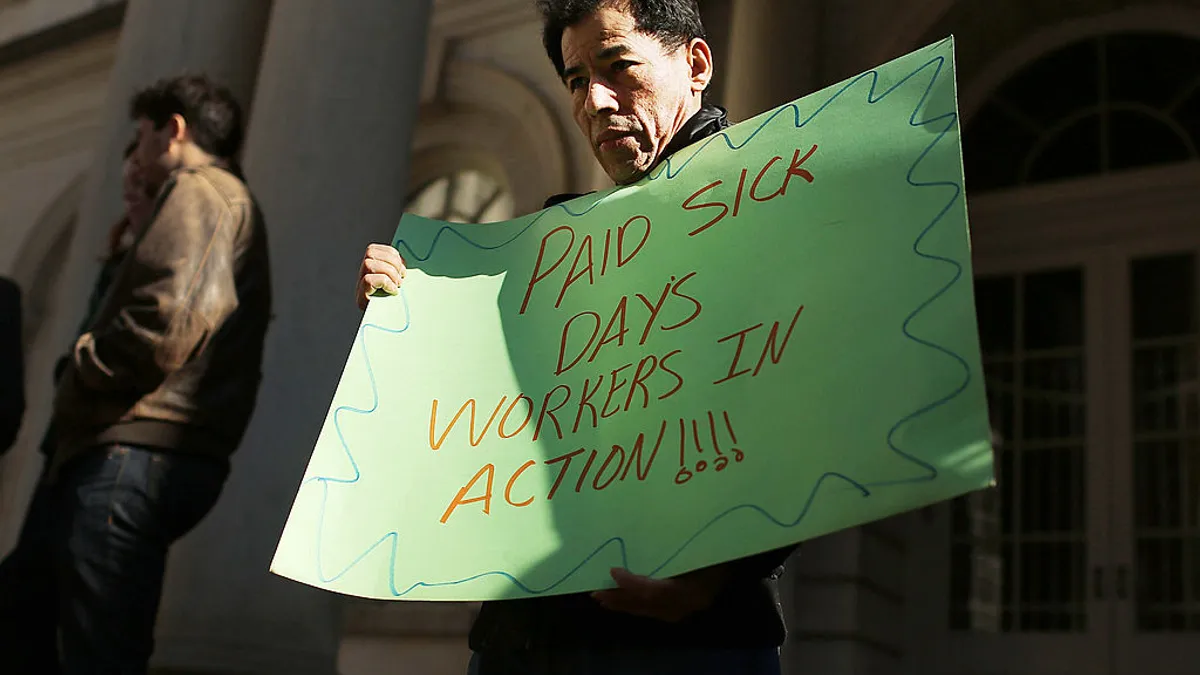Within the next month or so, open enrollment will be in full bloom. And that means U.S. employees should already be preparing to help workers make important decisions about healthcare benefits.
Craig Rosenberg, Health & Welfare Benefits Administration practice leader at Aon Hewitt, says employers first should look to match their health coverage options with their workforces to ensure they are offering a plan that will best meet employee needs in the coming year. But more importantly, he says employers should provide education and help to workers, who face tougher decisions with every benefits season.
"While most employees are not likely to see significant changes in 2016, costs are likely to change for employees," Rosenberg notes. For example, Aon Hewitt estimates the average employee spent more than $5,000 in premiums and out-of-pocket costs this year, so it's important for employers to help them be proactive and carefully review the options available.
To help employees optimize their health care and other benefits choices, Rosenberg offers some tips for the 2015-16 enrollment season:
Participate in the enrollment process
Employers may be making changes, so plans chosen from last year might look different from the coming year. Encouraging employees in making an active decision during enrollment will help them avoid being defaulted into a health care plan that doesn't meet their needs, or leave them with no coverage at all.
Determine the best source of dependent coverage
Coverage may be available to dependents through the employer plan, the spouse or partner's plan, or their plan (if adult children). Plan design (e.g., deductible, services covered), provider networks, and paycheck costs can vary, so it's important to communicate that employees review and compare these plans to ensure they are choosing the coverage they need at the optimal cost.
Reassess employee, dependent health care needs
Encourage employees to reserve time before open enrollment to take a fresh look at their healthcare needs for the year ahead. For example, they should consider how much they have spent out-of-pocket (e.g., deductibles, co-pays, and co-insurance), the number of doctor visits they typically make and the cost of regular prescription drugs.
If they are participating in a Health Care Flexible Spending Account (FSA), remind them to evaluate if their contribution is too little or too much based on their actual and anticipated expenses. Be sure they understand what happens if they don't use up their full balance for healthcare expenses they incur during the year.
Don't buy on price alone
The cost to purchase a health plan is just one part of the decision-making equation. Employees should consider how much they will spend out-of-pocket to use the coverage — for example, meeting deductibles and paying for office visits or prescriptions. Like any insurance plan, it's important they buy the right amount of coverage based on their needs — buying too much or too little coverage could cost them money.
Explore all health plan choices offered
It's easy for employees to get comfortable with the plan they've been enrolled in for years, but the combination of changing needs and new or updated plans available mean there could be other choices they should consider.
For example, many employers offer Consumer-Driven Health Plans (CDHPs). CDHPs often have lower premiums, and a growing number of employers are making these plans more attractive options. Of the companies that offer CDHPs, many subsidize premiums for these plans at a higher rate than other plan options.
CDHPs also may include a higher deductible, but they are often paired with Health Reimbursement Accounts (HRAs) or Health Savings Accounts (HSAs), which employees can use to help pay for eligible out-of-pocket health care costs. Contributed funds can earn interest and grow tax-free.
Evaluate a plan's provider network
Most employers provide access to tools that let employees review which doctors participate with each health plan. Employees should be encouraged to make a list of family doctors and use these tools to verify whether they are in-network for health plan choices under consideration.
Finally, Rosenberg says employers should educate workers to help them take a "health and wealth" view to spend their dollars wisely. It's important that they look holistically at their health and financial wellbeing, including health care, income protection (e.g., life and disability insurance), and retirement planning.
"Employers can build employee engagement and other positive connections with the workforce by taking a proactive role during open enrollment," Rosenberg says.






















